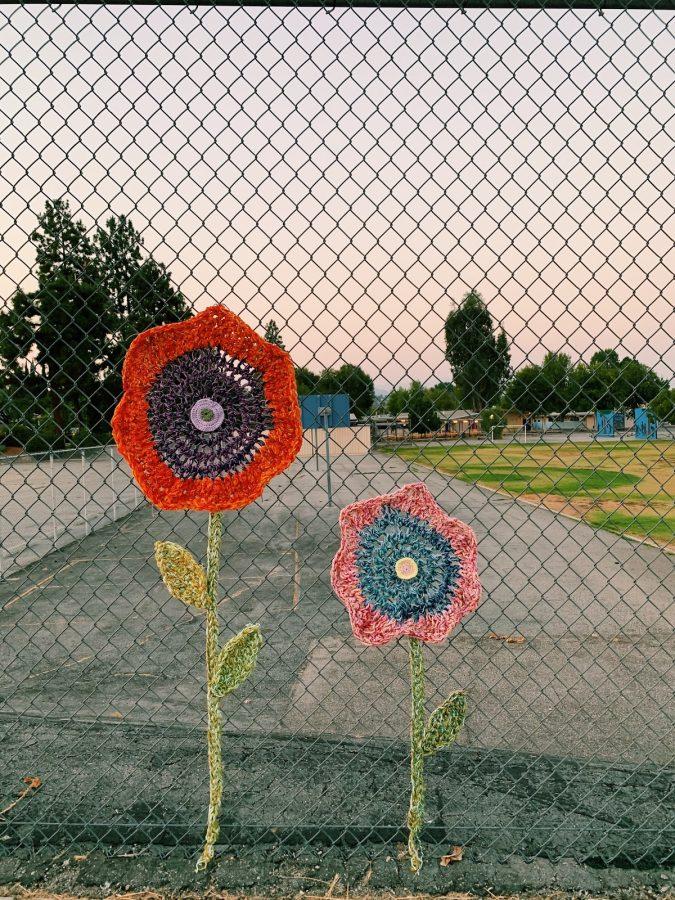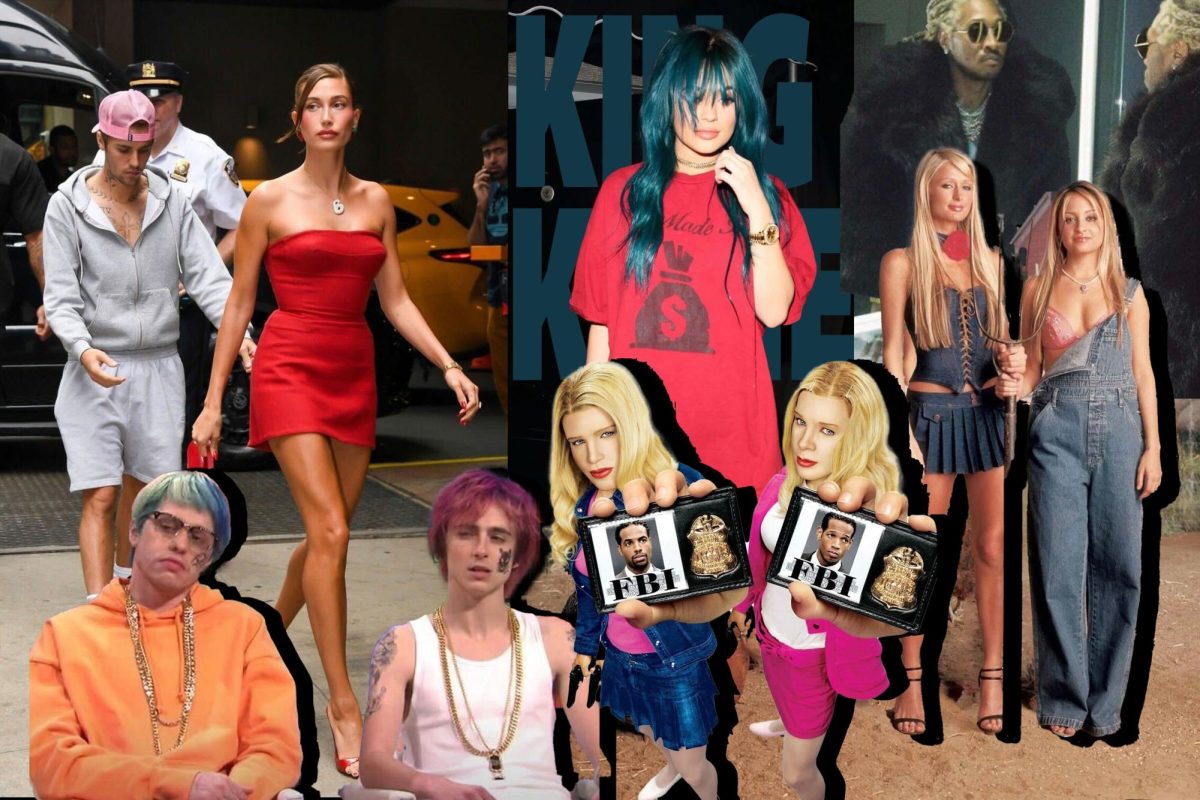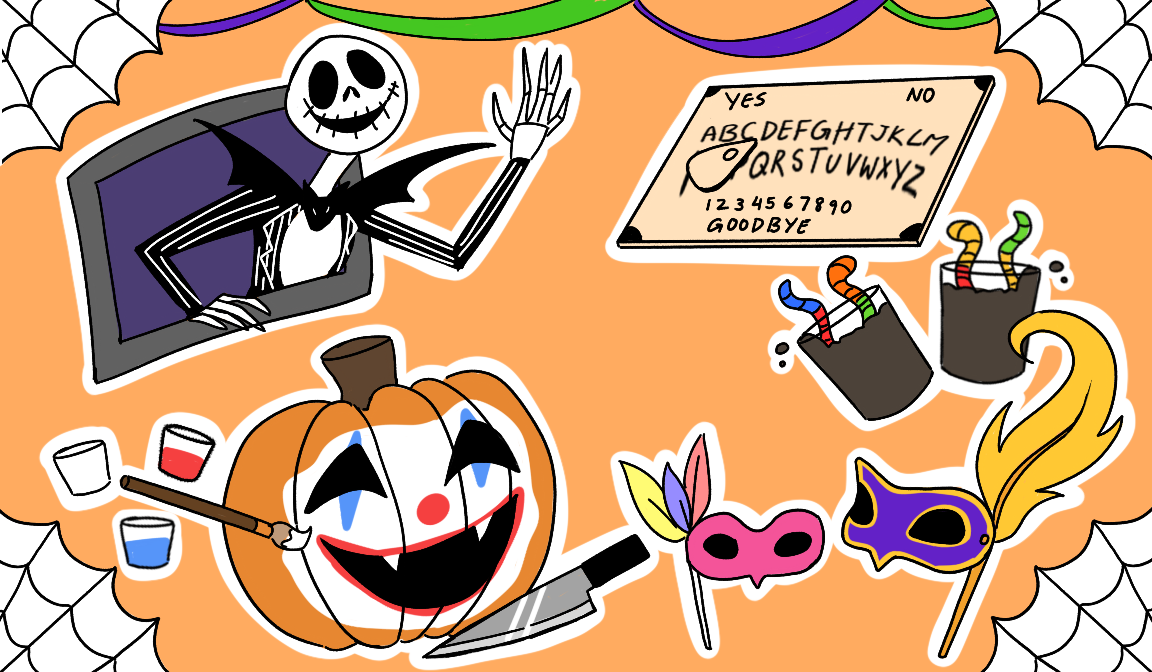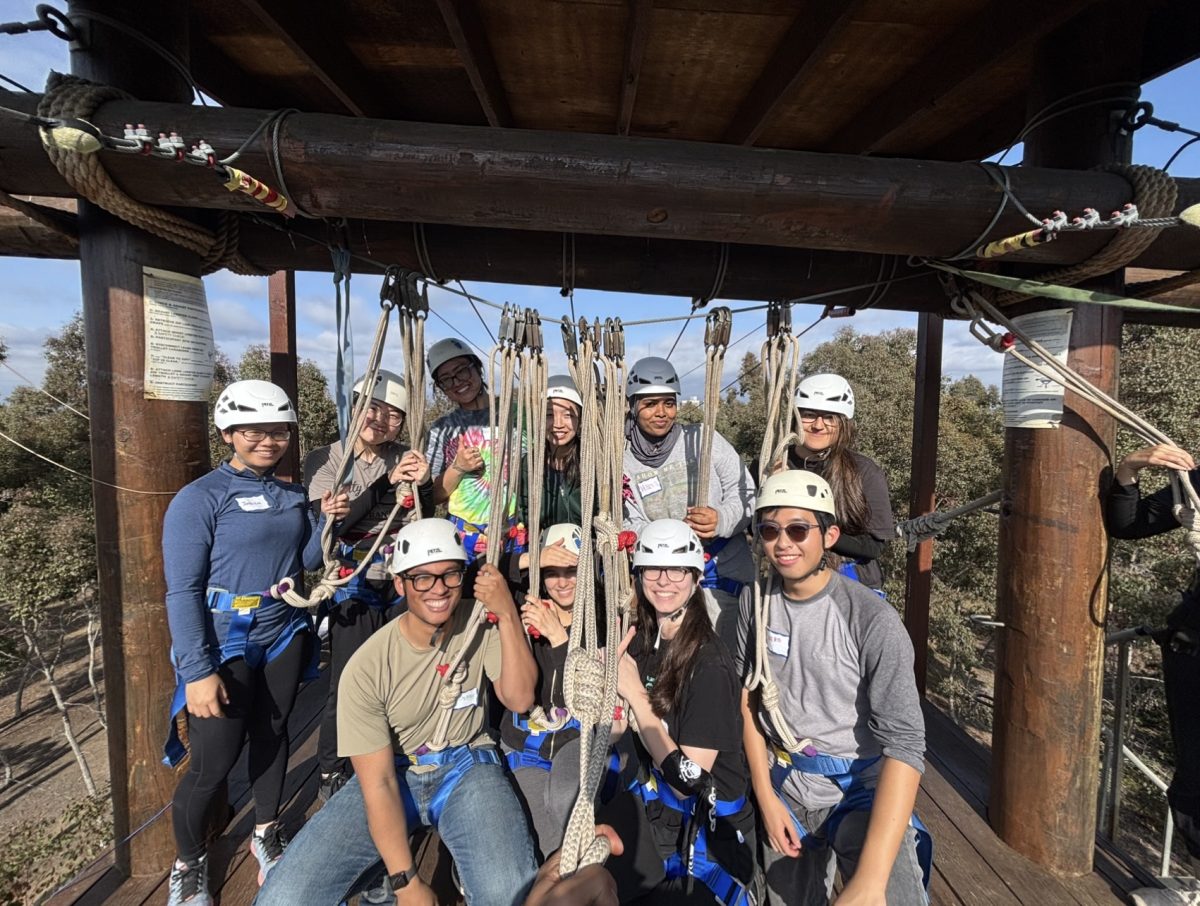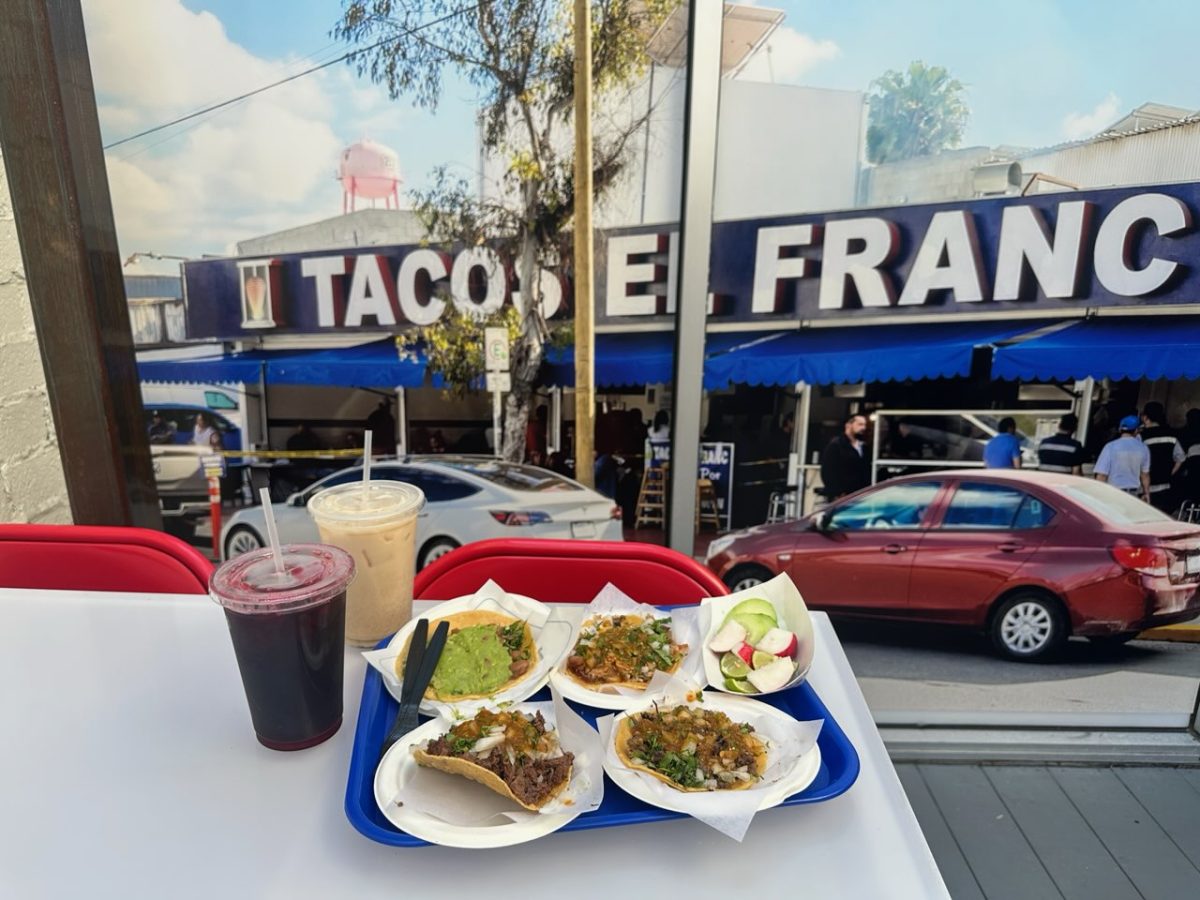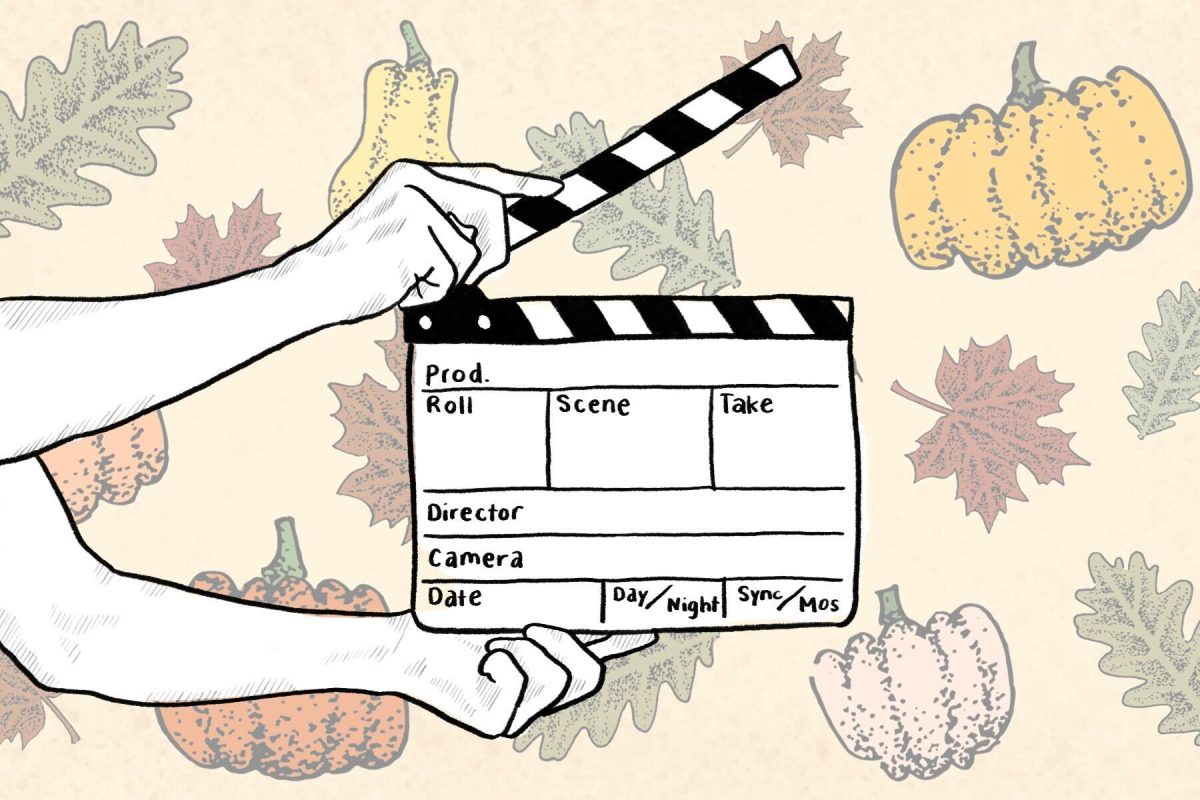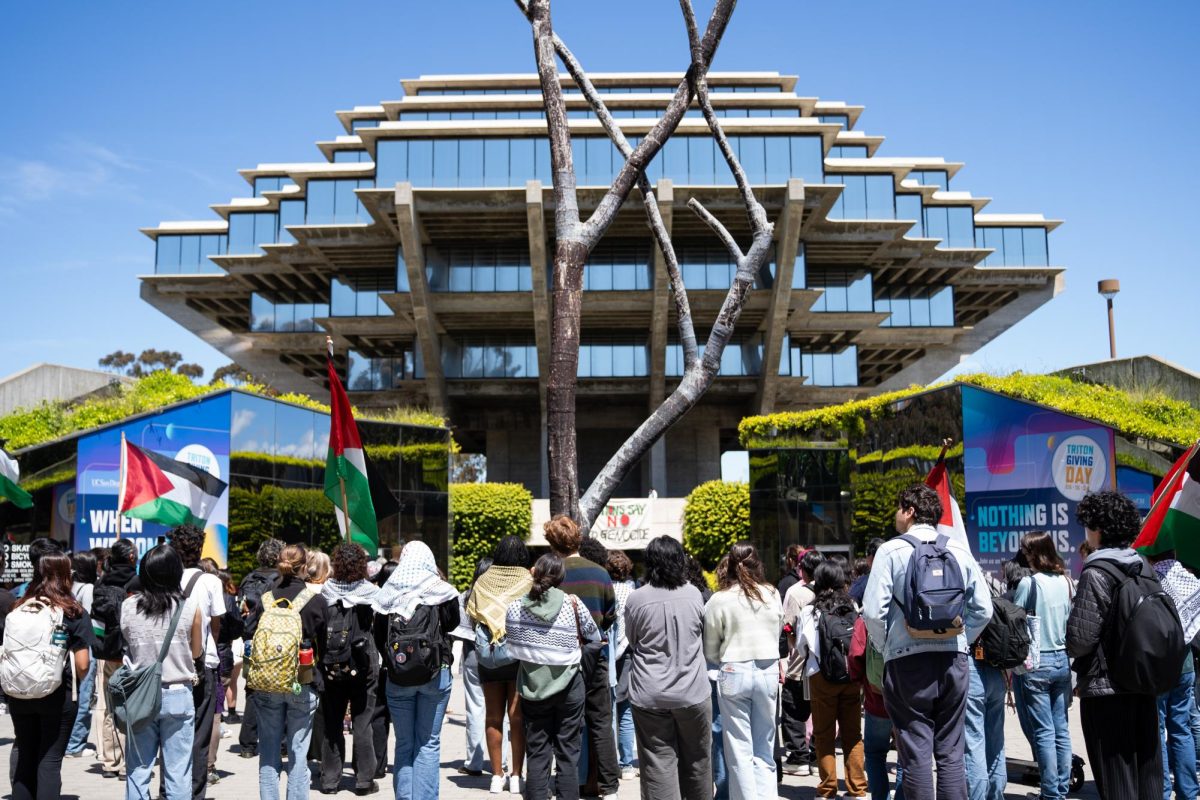Yarn bombing is an ever-growing street art movement that was born in the early-mid 2000s from the combined love of street art and fiber arts. Yarn bombing consists of covering, wrapping, or decorating objects in pieces of knit or crochet. While most forms of street art involve paint or drawings that are permanent, yarn bombing is impermanent as yarn can be easily removed from the surface it is attached to. Common yarn bombing sites include fences, trees, street sign poles, street light poles, and more.
Magda Sayeg, has been credited as the “mother of yarn bombing” ever since she covered a door handle inside her Houston Texas boutique in 2005. From there, Sayeg started a group of yarn bombers called the “Knitta Please” that worked on projects such as the iconic yarn bombed trolley buses, staircases, statues, and countless poles, and notably, the 100 yarnbombed trees in front of the U.S. Capitol.

Watch Magda Sayeg’s TEDYouth talk here:
The yarn bombing movement has gained popularity in recent years, spreading around the world, and inspiring a wave of artists whose work excites eyes and Instagram feeds. London Kaye has become one of the most famous faces in yarn bombing, starting her journey in New York City after a ballet injury, and eventually making her way to Los Angeles where many pieces currently stand. As she explains it, yarn bombing “brings warmth into an urban environment.” Kaye has made a name for herself with countless viral yarn bombs including the iconic Los Angeles rainbows situated on the wall of The Paper Bag Princess on Melrose Ave. In addition, Kaye is arms deep in commercial commissions, including collaborations with brands such as Miller Lite for a Times Square billboard, Disney, Starbucks, and Champion, to name a few.
As an avid knitter from a young age, I discovered yarn bombing in my mid teens by accident when I decided to cover the dresser drawer knobs and door handles of my bedroom in crochet. Artists like Magda Sayeg and London Kaye then inspired me to take my love for crochet into the outdoors which led to my first true yarn bomb, a tree in the front yard of my family’s home. Watching neighbors stop to look at the burst of color while being somewhat anonymous was so much fun.

Yarn bombing can merge into art activism when it includes messages on topics that the yarn bomber finds important to spread. One of my recent yarn bombs is a piece inspired by the Black Lives Matter movement that I attached to a gate in my hometown neighborhood this summer. After less than two days, it was taken down by a neighbor who decided it was “too political.” Another neighbor happened to be driving by the right place at the right time and noticed it was being taken down. She pulled over and asked if she could at least keep it, and through yet another neighbor and the magic of the Facebook group community, the crochet was returned to me to find a different place to display it.
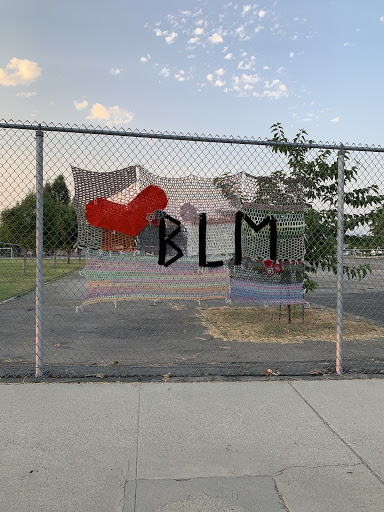
To me, the best part about yarn bombing is that anything goes. As long as one doesn’t block important street signage, the limits are as far as the eye can see. While yarn bombs can have a social impact-driven message, they can also simply be made to add a splash of color to a space. The world is our playground and yarn bombing can add a bit of joy to our lives whether we are the makers or the passerby. If you are interested in yarn bombing, a great place to start is by learning the basic building blocks of the crochet stitches like the chain stitch, single crochet, and double crochet through YouTube video tutorials. Though it takes patience, nothing can top watching your idea come to life and seeing the smiles yarn bombing can bring to those around you!


